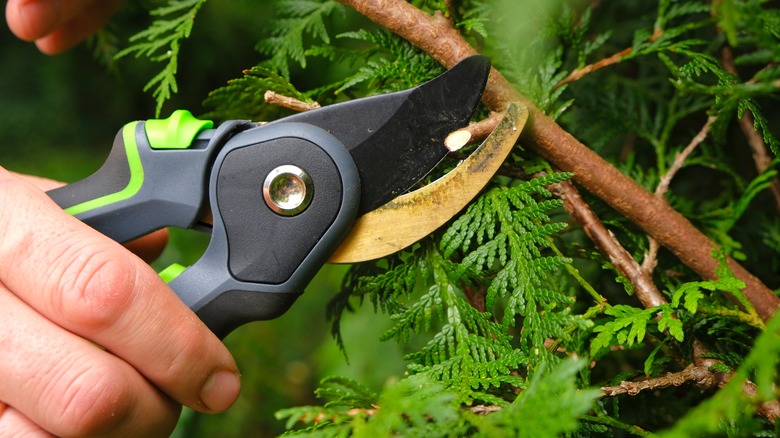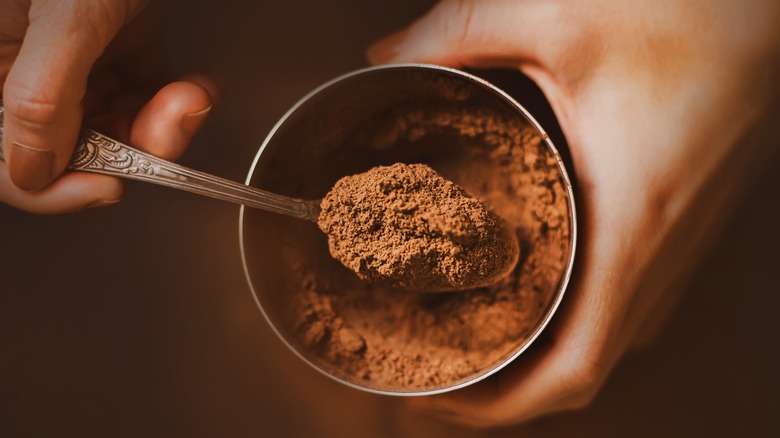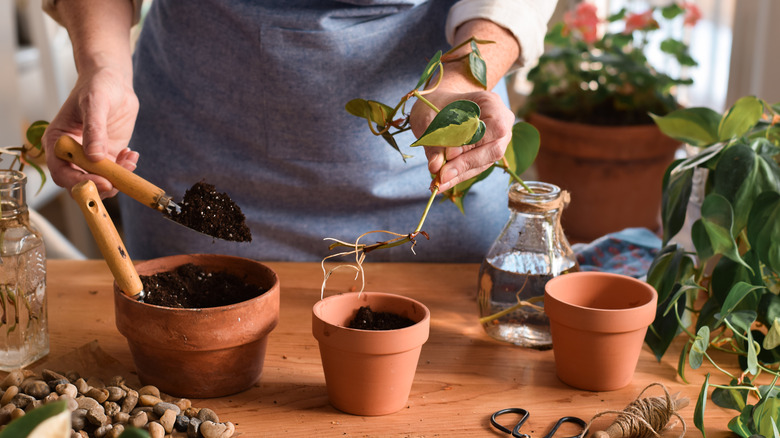Protect Your Pruned Plants From Disease With This Common Kitchen Spice
Pruning your plants in the garden is a great idea for a number of reasons: Firstly, it gives you a chance to inspect the whole plant and notice any problems, like pests or diseases, in the early stages. Secondly, you can remove dead parts and give the plant a new lease of life for better growth. Finally, pruning can improve the shape and density of shrubs for healthier and more aesthetically pleasing plants in your garden. The downside of pruning, though, is you can expose the plant to disease if you leave wounds from cuttings exposed and vulnerable. The good news is that you can protect your pruned plants using a common kitchen spice — cinnamon.
Cinnamon has all sorts of beneficial uses in the garden. You can use cinnamon to repel pests, and in higher doses, it can even prevent egg-laying. Cinnamon works like a natural rooting hormone, so it can stimulate fast-growing and healthy roots when propagating plants. The antibacterial properties of cinnamon also make it a powerful fungicide for soil, and when applied, it can prevent disease from developing in exposed stems after pruning plants.
How to use cinnamon to protect plants when pruning
When you prune your house or garden plants, you are essentially creating open wounds that can become infected, just like with our own bodies. Cinnamon's antibacterial properties can be used to 'seal the wounds' on your plants after pruning, helping them heal. You will need sharp, clean pruning tools to avoid bacteria entering plants after you make your cuts. Use ethanol or isopropyl alcohol to sanitize blades by dipping them into the disinfectant or using a cloth to wipe them thoroughly.
After making your cuts, seal the open wounds with cinnamon powder. Ensure you use 100% ground cinnamon powder and not cinnamon sugar. Sprinkle or spoon the powder over the end of the cut stems and branches until it has formed a seal over the exposed bits. Normally, the sap will provide enough moisture for the powder to stay in place, but you can also create a paste with water to smear it on instead. Use cinnamon powder in the same way to protect any damaged areas and prevent disease or fungus while repelling pests.
Why cinnamon is effective at protecting cut stems
When a plant is damaged, or when it has exposed cuts after pruning, it will be vulnerable and put its energy into healing. Cinnamon acts as a powerful protective barrier to a host of potential threats. With sap exposed, pests are more likely to be attracted to the plant, but most pests hate the spicy smell and taste of cinnamon, which is why it can act as an effective insect and pest repellent. Aside from insects like ants, fruit flies, and wasps, larger pests and mammals will also steer clear, including mice, rats, squirrels, rabbits, moles, and weasels.
The antimicrobial and antibacterial qualities of cinnamon work hard to keep fungi and diseases at bay while pruned parts of the plant heal, but the auxin content of the spice is also useful to sustain growth. This is why cinnamon is used as a popular natural rooting agent for plant cuttings, and why it can be useful in promoting new growth in freshly pruned plants, when you want to fill out small shrubs and stop them from growing too tall and leggy.


